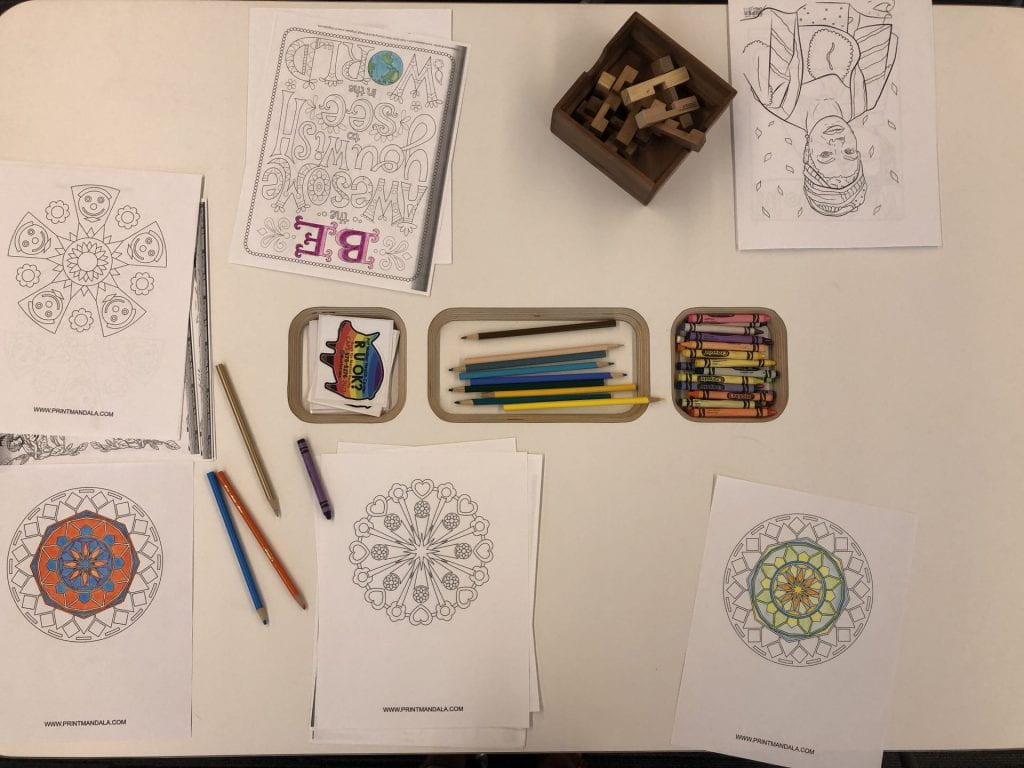CAPS Construction Doubles Access for UA Students
As students show an increase in the use of mental health care, Pat Walker Health Center staff has expanded their outreach to meet the growing need.
UA students have increased the use of Counseling and Psychological Services by 28.6 percent since the 2014-2015 academic year, according to Pat Walker Health Center data. In the last four academic years, 33.8 percent more of the student body has had at least one appointment with CAPS, data shows.

By Mary Hennigan
The Razorback Reporter
The Pat Walker Health Center staff expanded mental health outreach to accommodate the growing need. The construction doubled the capacity for students in CAPS, said Mary Alice Serafini, associate vice chancellor for Student Affairs and executive director at the Pat Walker Health Center.
Zac Brown, the assistant director of communications at the Pat Walker Health Center, attributed the increase of students to the completion of construction at the center and the decreasing stigma behind mental illness. Instead of promoting events for Suicide Prevention Week and having students attend on their own, Brown and Mindy Wilkerson, the suicide coordinator, tried a different approach.
“We really just want to meet students where they are and find ways to speak to them,” Wilkerson said.
In the past, she has been told by students that they would not come to events about suicide on their own, she said. Based on this, Wilkerson and the Pat Walker Health Center staff flipped strategies to reach groups of students by speaking in classrooms.
“By going into these classes, you’re already reducing that vulnerability stigma by saying ‘I’m gonna come to you’ instead of having that strength and courage to go to an event,” Brown said.
Sophomore Elizabeth Black visited CAPS for the first time in August 2018, she said.
“They didn’t have any room in their therapy classes so I had to see a therapist off campus,” Black said. “It was really inconvenient because I didn’t have my car. My brother had to take off work to take me.”
After she started with an off-campus therapist, Black didn’t see a reason to return to CAPS, she said.
“If they had room for me I would have gone more,” Black said.
Black thinks the new construction is great, but might not be enough, she said. The best-case scenario would be to prepare for every single student.
“It’s not saying that more people are having issues with mental health, it’s saying more people are starting to get help for it,” Black said.
During college, most students struggle with anxiety and depression, Wilkerson said. With that can come suicidal challenges and panic attacks.
Senior Caroline Praestholm is president of the UA Mental Health Awareness Organization and has personal experience with suicidal tendencies.
“I had a twofold experience. I have gone through suicidal ideology, but my father also committed suicide when I was 17,” Praestholm said.
Her suicidal thoughts started in high school and got severe as she started college, she said. During her freshman year, Praestholm felt isolated and overwhelmed by the college study load.
“I’m a very independent person. I didn’t want to ask for advice, so that made me feel like I wasn’t good enough,” Praestholm said. “I blamed myself for not doing well, not developing skills earlier and not connecting better with people.”
After receiving a semester’s worth of grades she was not proud of, Praestholm said it was time for a change.
“When I got those grades back, I realized this was not working anymore and I needed to get help. Not everyone is that lucky,” she said.
Praestholm started as a member of the Mental Health Awareness Organization. Now, as president, she distributes emails to 288 members to spread awareness of different mental health issues.
Finding risk factors for suicide is complicated, said Wilkerson. Each person has unique individual pain and trauma and the Pat Walker Health Center wants to find ways to speak with those individuals in ways that they can hear, she said.
“If it was cookie-cutter it would make it easier to prevent it,” Brown said. “But it’s not that black-and-white, so obviously it’s important that we’re touching on many different angles and reaching out to many diverse people.”
